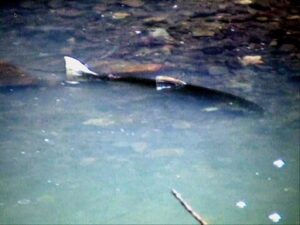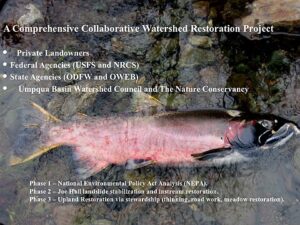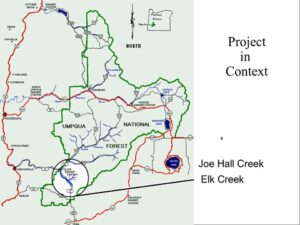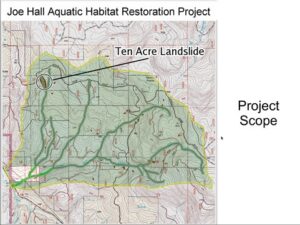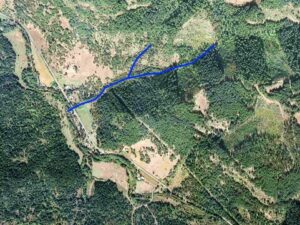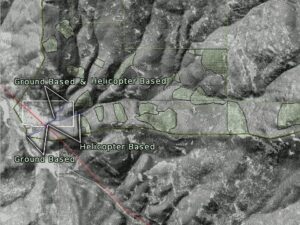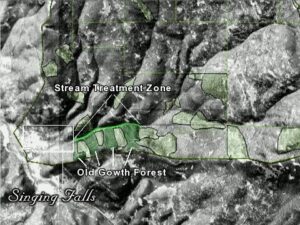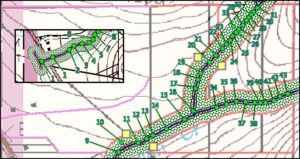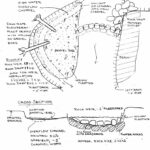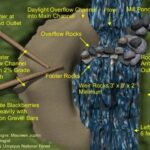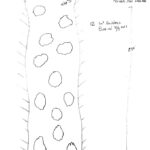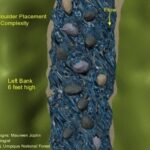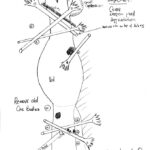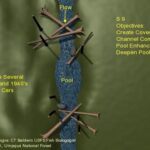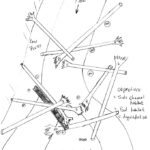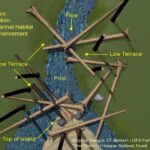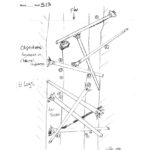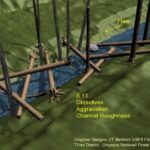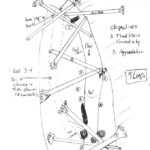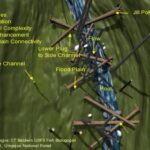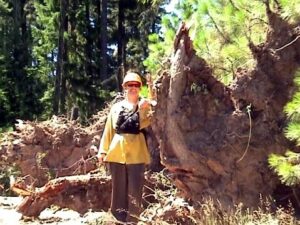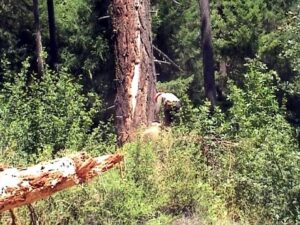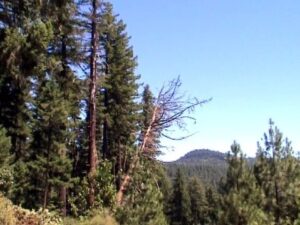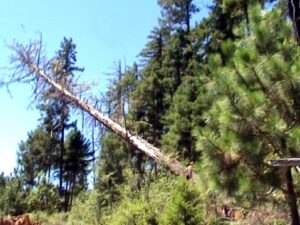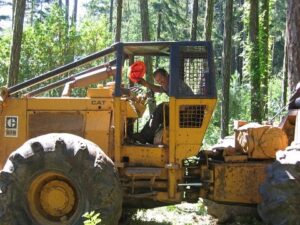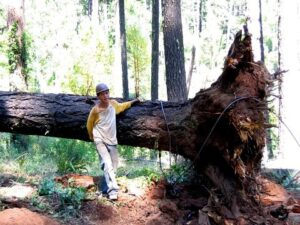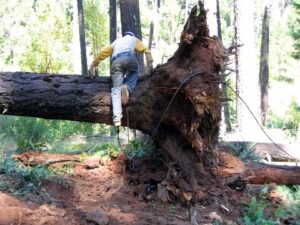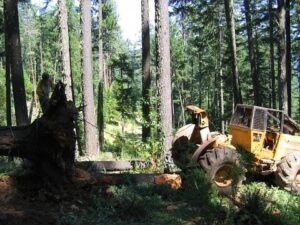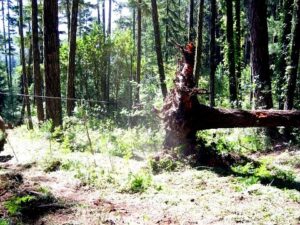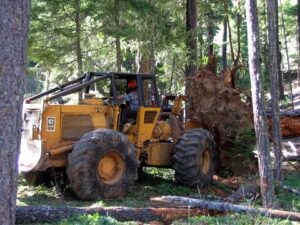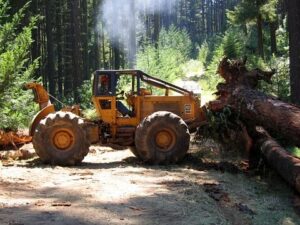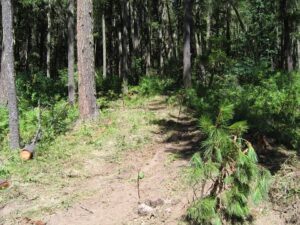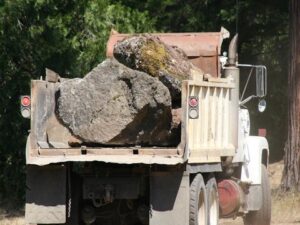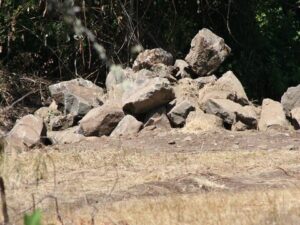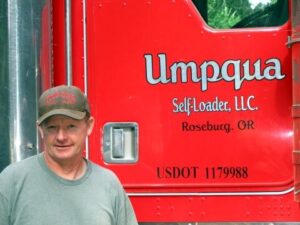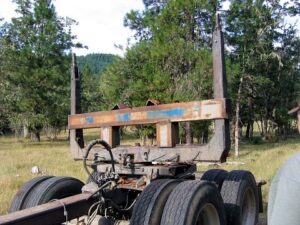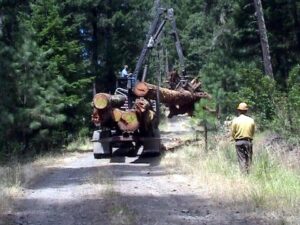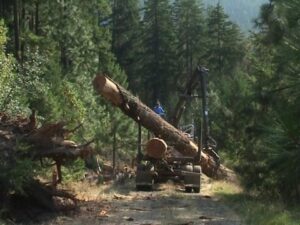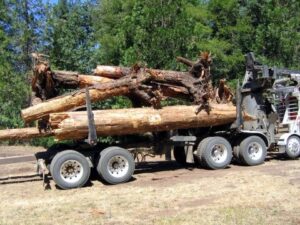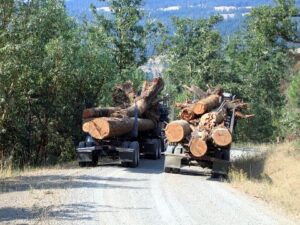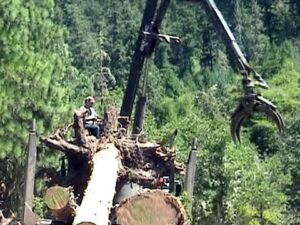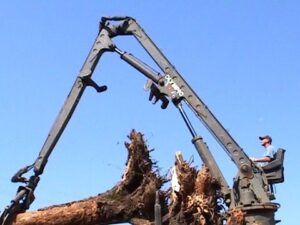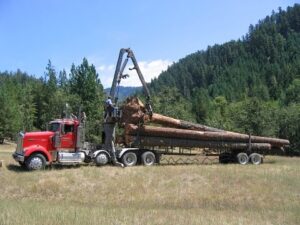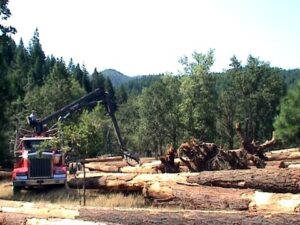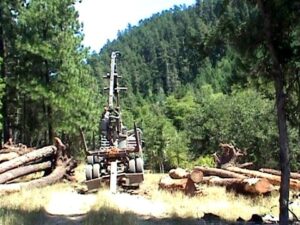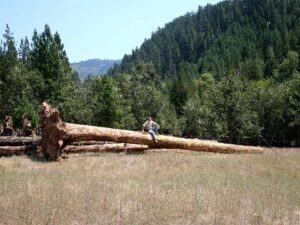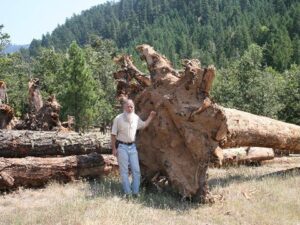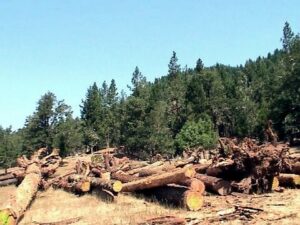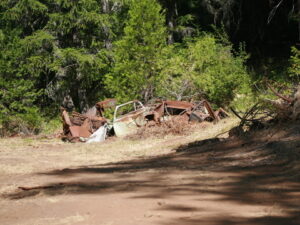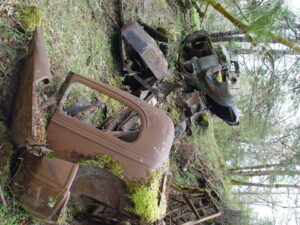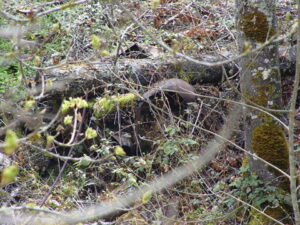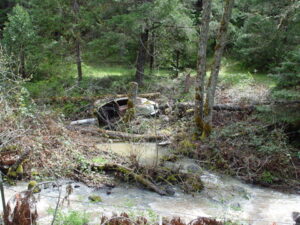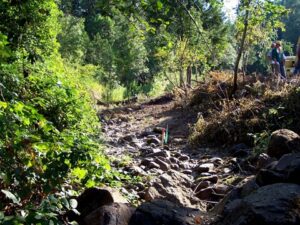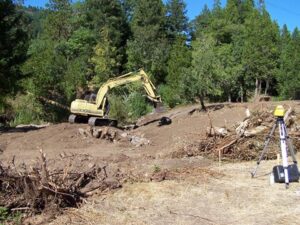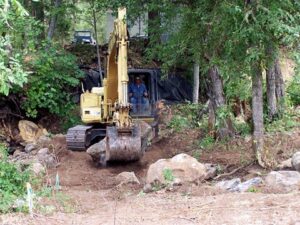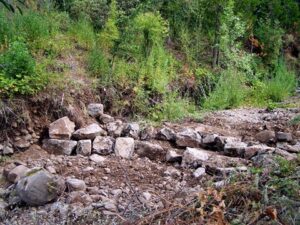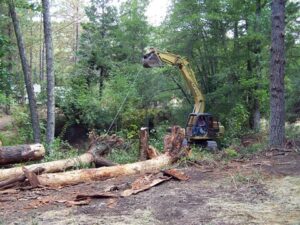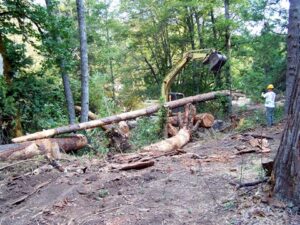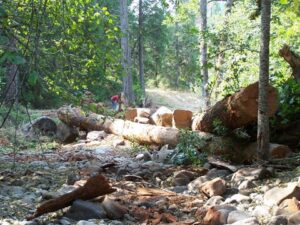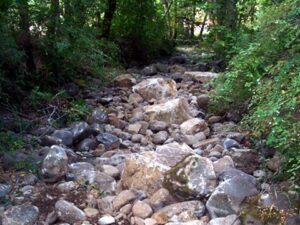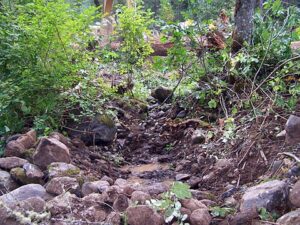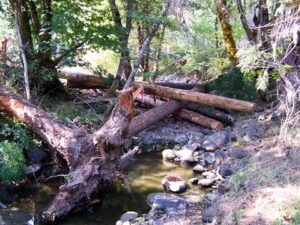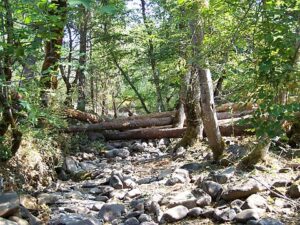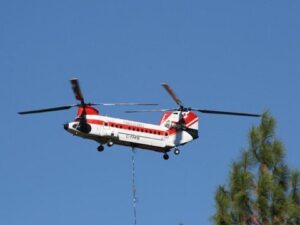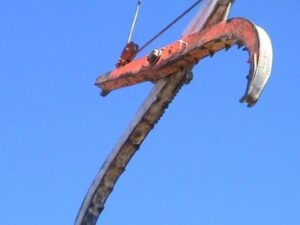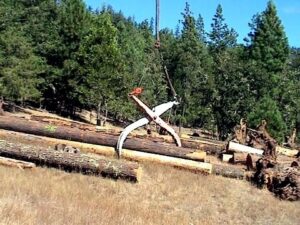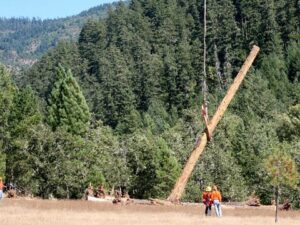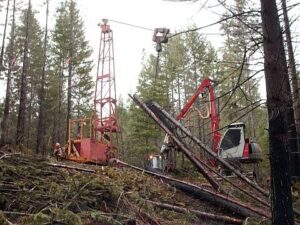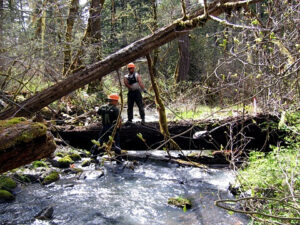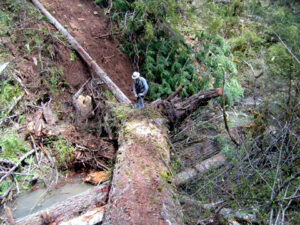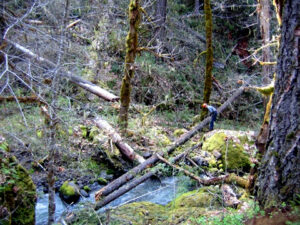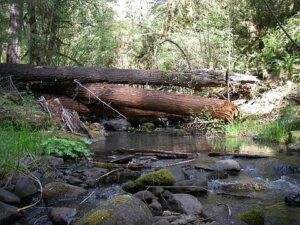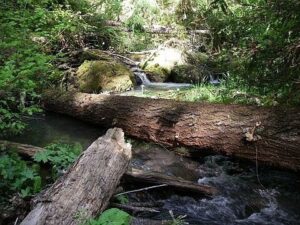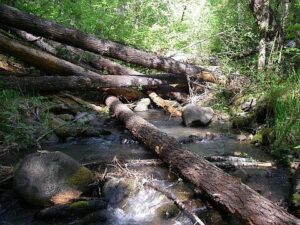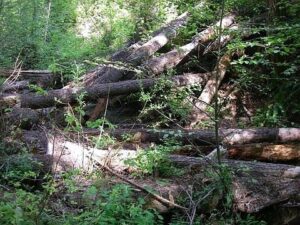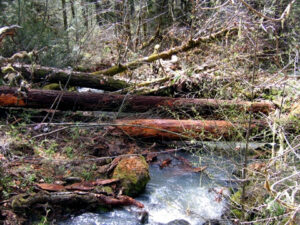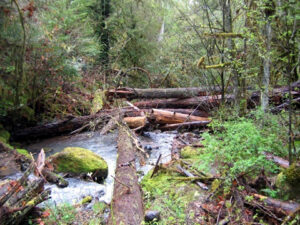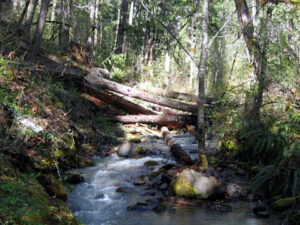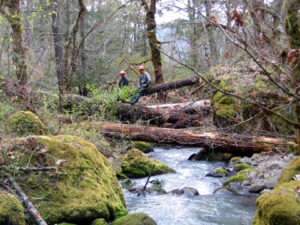The Joe Hall Creek Restoration Project
This the first in a series of projects that became the foundation for the South Umpqua Rural Community Partnership 501(C)3 formation as a nonprofit organization. For that reason we will take you on an extensive review. Enjoy! Below are links related to project development and related topics of interest.
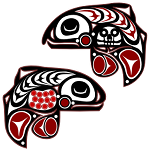
Highlighted links related to project development and implementation:
The Joe Hall Powerpoint PDF to apply for various grant funds.
Broken Wheel – An article giving the landowners perspective on why they participated in the restoration project.
The following is a comprehensive series of images that illustrate the process of developing an aquatic habitat restoration project. Other examples will not be this well represented. Select the first image and proceed from there. Don’t miss the helicopter massive log lift and the bottom of the page. Select the first image to scale it up for viewing and then navigate through the sequence using the arrows.
Galleries of the Project Development
Scale, Scope and Support
These images were some of the images used to explain the importance of the project related to endangered species (Coho Salmon). They also show an extensive amount of collaborative support for the work to be done. These private lands are surrounded by Umpqua National Forest and it was critical to illustrate the significance of USFS agency’s involvement through its mandate to protect and restore adjacent old growth habitat and the species it harbors.
Design and Review Examples
There were 43 sites located on the lower end of the project area associated with private landowners holdings. An assessment of the stream profile, cross section and adjacent riparian conditions was done. An evaluation of the entire Joe Hall watershed and its potential stream flow rates was a critical factor needed for appropriate design features and the frequency of the sites. The main objectives of these instream structures was to add stream complexity, create and store important gravel deposits needed for spawning salmon and trout. The strategically placed sites are also meant to slow down water flow to recover areas scoured down to bedrock. The US Army Corps of Engineers and other key agencies had to review and approve these designs produced by the Forest Service fish biologist.
Accumulate Implementation Resources
It can’t be emphasized enough that the materials needed to create a successful project are hard to come by. Fortunately many of the headwater areas had a great accumulation of large trees that had blown down with root wads attached AND a fair amount of standing dead snags. If there wasn’t a significant pool of local skill sets and equipment to manage these materials it would have become a road block. The length of the trees and size of the boulder materials were calculated based on the watershed assessment.
Prepping Large Woody Debris for Transport
Transport and Staging of Materials
Trash Removal From the Riparian Zone and Stream
Many ten yard truck loads of trash were removed from the stream systems
Survey and Implement Designs
High Line Placement on National Forest Land Portion of the Project
Helicopter Placement Videos
The Fruit of these labors has been an annual salmon spawning event. The number of returning salmon has fluctuated. Coho salmon are still listed under the Endangered Species Act. Without the recovery of natural conditions in our watersheds on a much larger scale, including the return of beaver into the ecosystem, the increase of salmon to their natural abundance will be in question.
